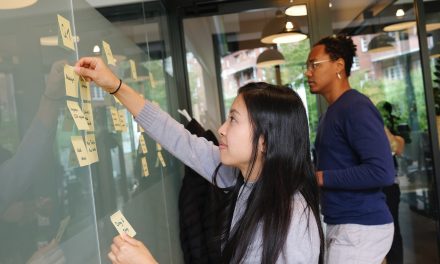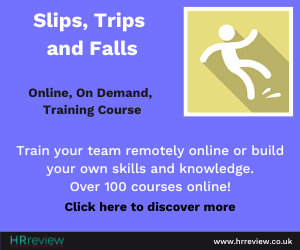The psychology of performance seeks to understand the thinking and behaviours initiated by striving for peak performance or even excellence. Athletes and teams that are coached according to the findings of positive sports psychology perform at a higher level, exhibit greater resilience, optimism and emotional well-being. The result is better performance under pressure and an ability to cope far better when faced with setbacks. Not only are they able to deal with failure in sport, they can apply the same coping strategies to their daily lives.
One of the key strategies used in sports psychology is mindfulness, to not only buffer against stressors, but also to focus, and act as an aid in achieving “flow” (aka “in the zone”) states. These psychological and physiological attributes of athletes, how they interact and are utilised are fundamental to optimal performance. But the science of performance isn’t just for athletes. We can take the same approach to our own performance at work.
If 2024 is all about performing at your best, and feeling engaged at work, then this article is for you: using mindfulness to help you get to peak performance states.
Mindfulness Simplified
Simply put, mindfulness is the ability to pay attention to the present, without getting lost in the story of our thoughts. Our mind is constant chatter of anxious thoughts about the future, or thoughts ruminating about the past. Mindfulness allows us to react with our emotions and thoughts with kindness, equanimity and intelligently, so we aren’t jerked around by them.
To be mindful means consciously cultivating the 9 attitudes of mindfulness: non-judging, gratitude, patience, a beginner’s mind, trust, non-striving, acceptance, letting go, gratitude and generosity (Kabat-Zinn, 1990). And just like any muscle of the body, mindfulness can be trained, strengthened and no matter how mindful you are currently, you can become more mindful tomorrow.
How it works
Mindfulness works through allowing us to decentre from stress into a state of presence and awareness (Garland et al, 2015). This encourages us to cognitively reframe our life circumstances and reduce the negative emotions we feel. The process is further improved through individuals savouring positive aspects of their environment, encouraging actions driven by purpose in life and our values.
No matter what our age is, or our past experiences, practising mindfulness may physically change our brain. Neuroscience research spotlights increase in the grey matter of the pre-frontal cortex, resulting in enhanced executive function abilities, for example, problem solving and memory (Gotink et al, 2016). Mindfulness may also decrease the grey matter of our amygdala, allowing for less reactivity when we are stressed.
Furthermore, mindfulness activates the Task Positive Network, a brain network that is associated with “flow” states linked with greater well-being, performance and happiness, as well as decreasing the activation of the Default Mode Network, associated with excessive worry patterns commonly found in depression (Brewer et al, 2011). Consider what tasks at work bring you “flow”, and how you can carve out uninterrupted time to really get absorbed in these activities.
Debunking the myths
There are many misconceptions about mindfulness that can be a barrier to taking it up. The most prevalent one I find, when I teach mindfulness to teams and professionals, is the worry that mindfulness is a religious practice. Although originally having its origins in Buddhist culture, mindfulness is a secular practice. It was founded by Jon-Kabat Zinn in the 1970s to help a stressed population in the West. I certainly won’t be asking you to chant or change your religious views.
Mindfulness also does not involve stopping our thoughts. The mindfulness meditation process centres on paying attention to our breath, catching the brain wander and gently nudging our attention, with kindness, back to our breath.
Another common misunderstanding is that mindfulness is solely meditation. In fact, mindfulness, can be infused in absolutely all of our daily activities, both in the workplace and our home life. We can practise mindfulness when we listen to our colleagues, take the first 3 bites of our lunch, or take a deep breath before we start our next task. This makes mindfulness a self-care tool that arguably elevates from others: it can be used in the moment we need it.
Mindfulness benefits
Mindfulness may also empower professionals with the necessary tools to be resilient. A positive leader today requires considerable psychological resilience to weather challenges and grow through them.
If we think of the mental health continuum, with one end representing low mental health and the other positive mental health, we know that where we sit on the continuum is continually shifting according to our life circumstances. We also know that protective factors can shift us towards greater resilience and positive well-being. And the good news is mindfulness, along with positive relationships, meaning and positive lifestyle factors, is an important protective factor through its ability to help us with increasing our emotional awareness, emotional regulation and also in harnessing the power of positive emotions.
Mindfulness indeed, may equip us to become more emotionally intelligent: that is the ability to be aware of our emotions and thoughts, to down-regulate with stress and be aware of the emotions of our work colleagues. This alone is so fundamental in building the resilience muscle.
Mindfulness for peak performance
Here are 7 powerful mindfulness activities that can help you increase peak performance states.
- Mindful deep breaths to increase focus and invite “flow”
Take a mindful deep breath during moments in your work day, such as before starting a new task or responding to an important email. Ensure the exhale is slightly longer than the inhale to trigger the parasympathetic nervous system and encourage a wave of positive emotions and buffering of our stress hormone: cortisol.
- Doubling Down on our Strengths – another route to “flow”
Try this strengths journaling activity to start spotting your strengths and activating them:
- Reflect on your top 5 strengths. If you’re stuck for ideas, you can fill the free strengths assessment viacharacter.org. This will rank your top strengths.
- Think of examples of how you are currently using these strengths. Which of these support you the most in doing what you love?
- Strengths can be used to overcome difficulties and take positive action to move forward. Which of these strengths have you used to overcome a challenge?
- Reflect on ways you can use your strengths in new and engaging ways during your week. What might you need to change to make that happen?
- What unexplored strength would you like to develop?
- What goal can you set to encourage you to use your strengths more at work and your personal life? What small steps can you take to move forward?
Alternatively, you can also discover your strengths using a guided strengths meditation: https://www.youtube.com/watch?v=WOCr0fKtD_g&t=2s
- Mindful break using aromatherapy
Bring presence and awareness during moments of stress using this short mindfulness micropractice. Place a couple of aromatherapy drops, such as lavender, onto a tissue and take 3 deep breaths. Anchor to the scent as you take a deep inhale and exhale. If you notice your mind wander, gently nudge it back to the aroma.
- Mindful Listening
Improve your listening and empathy skills through this mindful listening practice. For the next 5 minutes when you are with a work colleague, give your entire attention to them. Listen not to answer back, but to truly understand what they are saying. Exercise self-compassion and non-judgement.
- Mindful Eating
Practice eating with presence rather than mindlessly eating. During lunchtime, when you take your first 3 bites of food, hone into the experience of eating by slowing down and noticing all your 5 senses: What do you see? Note the textures, shape and colours in your food. What can you smell? What lastly can you taste? Notice all the different flavours of your food. Practice eating with presence rather than mindlessly eating
- Mindful Walking
Spend 5 minutes of walk outdoors concentrating on the sensation of walking. Slow down. Hone into as many senses as possible: what can you see? What can you hear? What can you smell? What can you taste? What does it feel like to slowly take mindful steps? If you notice your mind wander, gently nudge it back to the present by honing back to your senses
- Take A Self-compassion Break
Enhance self-compassion through using Neff’s 3 step process:
- When you next note you are stressed, or a harsh critical though pops up when you are at work, take a mindful deep breath.
- Remind yourself that you are not alone in your experience of negative thoughts.
- Lastly, use words of self-kindness and physical gestures that comfort you, for example you may say to yourself “I’m so sorry you’re going through this. I’m here to support you. What can I do for you in this moment?”
It is these small habits, the humble focus on our breath and relating to ourselves with kindness, non-judgment and warmth, that really has the capacity to make a meaningful impact to our well-being and performance at work. It has certainly brought me immense benefits: from increasing my sense of engagement at work to enhancing my purpose in life and improving my relationships. Why not give it a go?
References
Brewer JA, Worhunsky PD, Gray JR, Tang YY, Weber J, Kober H (2011). Meditation experience is associated with differences in default mode network activity and connectivity. Proceedings of the National Academy of Sciences.108(50):20254–20259
Gotink, R. A., Meijboom, R., Vernooij, M. W., Smits, M., & Hunink, M. G. (2016). 8-week Mindfulness Based Stress Reduction induces brain changes similar to traditional long-term meditation practice – A systematic review. Brain and cognition, 108, 32–41.
KABAT–ZINN, J. Full catastrophe living: using the wisdom of your body and mind to face stress, pain, and illness. New York, N.Y., Delacorte Press.
Neff K, Knox MC, Long P, Gregory K (2020). Caring for others without losing yourself: An adaptation of the Mindful Self-Compassion Program for Healthcare Communities. Journal of clinical psychology. Volume76, Issue 9 Pages 1543-1562
Dr Mahrukh Khwaja
Dr. Mahrukh Khwaja is a dentist, positive psychologist, accredited mindfulness teacher, and the founder of Mind Ninja, an award-winning wellness enterprise dedicated to improving mental health and resilience among the general public and healthcare professionals. Mahrukh envisioned a system of support that, just like daily brushing and flossing, took a preventive maintenance approach to mental health. Drawing on the neuroscience of well-being, and positive psychology, she developed Mind Ninja as a solution that would help professionals build mental resilience, foster connection and meaning, and thrive.











